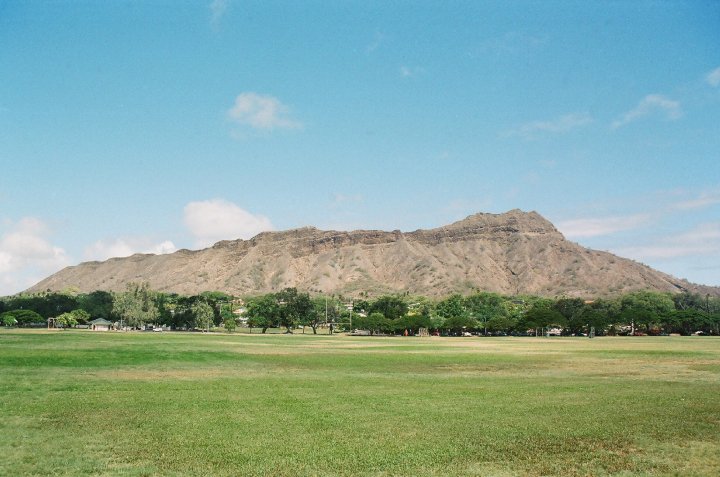- Forum
- Photography and Camera Forum
- Taking the Photo | Editing | The art of Photography!
- Tips and Taking Photos
- Avoiding Grainy Photos
Avoiding Grainy Photos
-
 Topic Author
Topic Author
- Hornet
- Newbie
- Followers: 3
-
Points:
314
-

- garyrhook
- Oh Wise One
-
- Nikon D850, Nikon D750, Panasonic G7K
- Followers: 912
- Posts: 11103
-
Points:
67681
Post #558540
Old tech, noisy (by definition), long since bypassed by modern products. Those images look just like what I'd expect from a body that old. I don't see how they're going to get any better, although Lightroom could possibly help (if that camera can even shoot RAW).
Time for new hardware. Things have progressed greatly since then.
-
 Topic Author
Topic Author
- Hornet
- Newbie
- Followers: 3
-
Points:
314
Post #558588
garyrhook wrote: Um, that camera is at least 17 years old. That sensor is probably, at best, 4MP. (I'm not going to take the time to track down the details.) I stopped shooting when the images from my 4MP Pany Lumix became intolerable for exactly this reason.
Old tech, noisy (by definition), long since bypassed by modern products. Those images look just like what I'd expect from a body that old. I don't see how they're going to get any better, although Lightroom could possibly help (if that camera can even shoot RAW).
Time for new hardware. Things have progressed greatly since then.
Thank you for the feedback. I'll get a new camera.
-

- Bryston3bsst
- Newbie
- Followers: 13
-
Points:
2181
Post #558595
If so, I never had that kind of grain when shooting film, especially at an ISO of 200. Was this particular roll of film very old? Have you tried others and, if so, do they all show this kind of graininess?
I might try another roll of fresh film before I went out and bought a new camera. That is...if...you really want to shoot film. Which, personally, I wouldn't go back to for anything.
Otherwise, I would replace it with a more modern technology digital camera.
-

- garyrhook
- Oh Wise One
-
- Nikon D850, Nikon D750, Panasonic G7K
- Followers: 912
- Posts: 11103
-
Points:
67681
Post #558687
Bryston3bsst wrote: I believe this is a film camera....is it not?
That was unclear when I read the info at Amazon, but there is discussion of the sensor size. I drew a conclusion. And now, doing more research, I see the same model (by name) for sale on eBay as a film camera.
Now I'm confused.
If it is film, then I take back what I said, but the OP doesn't talk about film, developing, and scanning. I took a guess at digital imagery.
Post #558736
To me the first one looks like it might have been hazy off in the distance; I don't really see grain in the second one (at least not on here on my monitor).
I shoot film and many people use 200 ISO film as an all purpose daylight film. I prefer 100 ISO outdoors on nice sunny days, and go with 400 speed film indoors, or outdoors on cloudy/overcast days (depending on the weather and if it's fairly dark and gloomy or not so much). I used to get a good bit of grain sometimes on higher speed films at 800 or 1000 ISO but maybe there's a reason those aren't made anymore - I liked 400 speed much better.
I would suggest too that you might try different film if you try this camera again, and check your settings - make sure you've set the camera's ISO to 200 or whatever box speed the film is that you're using. Meter the scene and learn to get proper exposures. A lab should be able to make adjustments in developing color film so there's some latitude shooting it. I send out film and it's possible to request the film be pushed or pulled (which I rarely do) but you could look up what's involved in that.
With B&W film I find particularly it helps to get a proper exposure to get negatives that aren't too thin (and barely usable) or too dense (which can be usable but involve zapping a lot of light thru them and not what I want to spend time doing!).
If you try some fresh film and shoot another roll, try taking notes and jot down what you did and how you set the camera and see what worked or what didn't.
Sharon
-

- Shadowfixer1
- Photo Elder
-
- Olympus OMD E-M1 MKII
- Followers: 1350
- Posts: 5563
-
Points:
73955
Post #558833
-
 Topic Author
Topic Author
- Hornet
- Newbie
- Followers: 3
-
Points:
314
Post #558945
Bryston3bsst wrote: I believe this is a film camera....is it not?
If so, I never had that kind of grain when shooting film, especially at an ISO of 200. Was this particular roll of film very old? Have you tried others and, if so, do they all show this kind of graininess?
I might try another roll of fresh film before I went out and bought a new camera. That is...if...you really want to shoot film. Which, personally, I wouldn't go back to for anything.
Otherwise, I would replace it with a more modern technology digital camera.
Yes, I'm talking about a 35mm film camera. I used a new roll of film. Before taking those pictures, I was able to take pictures without any of the grain with the same camera.
-
 Topic Author
Topic Author
- Hornet
- Newbie
- Followers: 3
-
Points:
314
Post #558946
garyrhook wrote:
Bryston3bsst wrote: I believe this is a film camera....is it not?
That was unclear when I read the info at Amazon, but there is discussion of the sensor size. I drew a conclusion. And now, doing more research, I see the same model (by name) for sale on eBay as a film camera.
Now I'm confused.
If it is film, then I take back what I said, but the OP doesn't talk about film, developing, and scanning. I took a guess at digital imagery.
I was talking about a film camera. The pictures were converted to digital. Even the printed pictures were a little grainy.
-
 Topic Author
Topic Author
- Hornet
- Newbie
- Followers: 3
-
Points:
314
Post #558948
icepics wrote: I'm not that familiar with Minolta (and think maybe they used the Maxxum name for various cameras) and thought too that the OP was asking about having a digital camera set at 200 ISO. Which to me didn't make sense that photos would be that noisy usually.
To me the first one looks like it might have been hazy off in the distance; I don't really see grain in the second one (at least not on here on my monitor).
I shoot film and many people use 200 ISO film as an all purpose daylight film. I prefer 100 ISO outdoors on nice sunny days, and go with 400 speed film indoors, or outdoors on cloudy/overcast days (depending on the weather and if it's fairly dark and gloomy or not so much). I used to get a good bit of grain sometimes on higher speed films at 800 or 1000 ISO but maybe there's a reason those aren't made anymore - I liked 400 speed much better.
I would suggest too that you might try different film if you try this camera again, and check your settings - make sure you've set the camera's ISO to 200 or whatever box speed the film is that you're using. Meter the scene and learn to get proper exposures. A lab should be able to make adjustments in developing color film so there's some latitude shooting it. I send out film and it's possible to request the film be pushed or pulled (which I rarely do) but you could look up what's involved in that.
With B&W film I find particularly it helps to get a proper exposure to get negatives that aren't too thin (and barely usable) or too dense (which can be usable but involve zapping a lot of light thru them and not what I want to spend time doing!).
If you try some fresh film and shoot another roll, try taking notes and jot down what you did and how you set the camera and see what worked or what didn't.
I'm used to seeing pictures with a higher resolution so I thought they looked a little grainy to me.
Thank you for the suggestions. I'll try them out.
-

- garyrhook
- Oh Wise One
-
- Nikon D850, Nikon D750, Panasonic G7K
- Followers: 912
- Posts: 11103
-
Points:
67681
Post #559052
As for grain, you don't indicate what kind of film, nor film speed, you were using/used. Higher ISO means more grain. I remember that even 400 ISO color film (40 years ago) had noticeable grain, so the answer is kinda "it depends", right?
-

- Shadowfixer1
- Photo Elder
-
- Olympus OMD E-M1 MKII
- Followers: 1350
- Posts: 5563
-
Points:
73955
Post #559106
-
 Topic Author
Topic Author
- Hornet
- Newbie
- Followers: 3
-
Points:
314
Post #559266
garyrhook wrote: My mistake.
As for grain, you don't indicate what kind of film, nor film speed, you were using/used. Higher ISO means more grain. I remember that even 400 ISO color film (40 years ago) had noticeable grain, so the answer is kinda "it depends", right?
I used Fuji 35mm film and I used the 200 film speed.
-
 Topic Author
Topic Author
- Hornet
- Newbie
- Followers: 3
-
Points:
314
Post #559268
Shadowfixer1 wrote: You say you used ISO 200 but is that what the film was rated at. The ISO needs to match the speed of the film. It's not an arbitrary number. If the film was 200 speed, then what was the resolution of the scan? A lot more information is needed to determine the issue with the grain. No one can guess the reason without full disclosure of the details. The information is more critical with film, than digital.
I used a film speed of 200. Before the prints were converted to digital pictures, I saw that the prints were a little grainy.
-

- fmw
- Newbie
- Followers: 12
-
Points:
12122
- Forum
- Photography and Camera Forum
- Taking the Photo | Editing | The art of Photography!
- Tips and Taking Photos
- Avoiding Grainy Photos
Latest Reviews
The Olympus Pen E-P7 is an affordable micro four thirds mirrorless camera with 4K video capabilities, a 20.3MP sensor, and 121 focus points, making it a solid entry-level camera for beginners.
The Panasonic G9 II is a 25.2-megapixel micro four thirds camera with numerous features that make it punch out of its weight class, like 779 AF points, 5.8K video, and weather sealing.
The Fujifilm XT5 is a 40MP mirrorless camera capable of 6.2K video at 30p. With those specs, it’s an ideal choice for photographers needing a camera to pull double duty for imaging and video.
The Canon EOS R100 is an entry-level mirrorless camera introduced in 2023. But just because it’s an entry-level camera doesn’t mean it’s a bare-bones camera. Find out why in this review!
Latest Articles
Auto white balance is a camera setting that adjusts the color temperature of your images automatically. It often works well, but you should know a few tips to fix problems it might cause, too.
The Canon EOS 5D Mark III might be more than a decade old, but it still has the chops to be a quality camera for photographers in 2024.
Starting a photography business can be a daunting task. There is a lot to do, and many mistakes can be made. This guide helps you minimize mistakes and maximize your success!
The Canon 6D Mark II might be an older DSLR, but that doesn’t mean it isn’t a good option for 2024. In fact, this budget-friendly camera is a powerhouse for stills and videos.
In this guide to the bokeh effect, you’ll learn what bokeh is and the factors involved in creating it. You’ll also explore some beautiful example images to spark your creativity with bokeh!
Upgrade your kit in 2024 with the best intermediate camera on the market! The question is, what camera fits the bill? We’ve got three top options for you to choose from in this buyer’s guide.
The best photography jobs right now are a mix of tried-and-true gigs like wedding photography and new jobs highlighting AI’s capabilities, travel, and videography.
The Olympus Pen E-P7 is an affordable micro four thirds mirrorless camera with 4K video capabilities, a 20.3MP sensor, and 121 focus points, making it a solid entry-level camera for beginners.
















